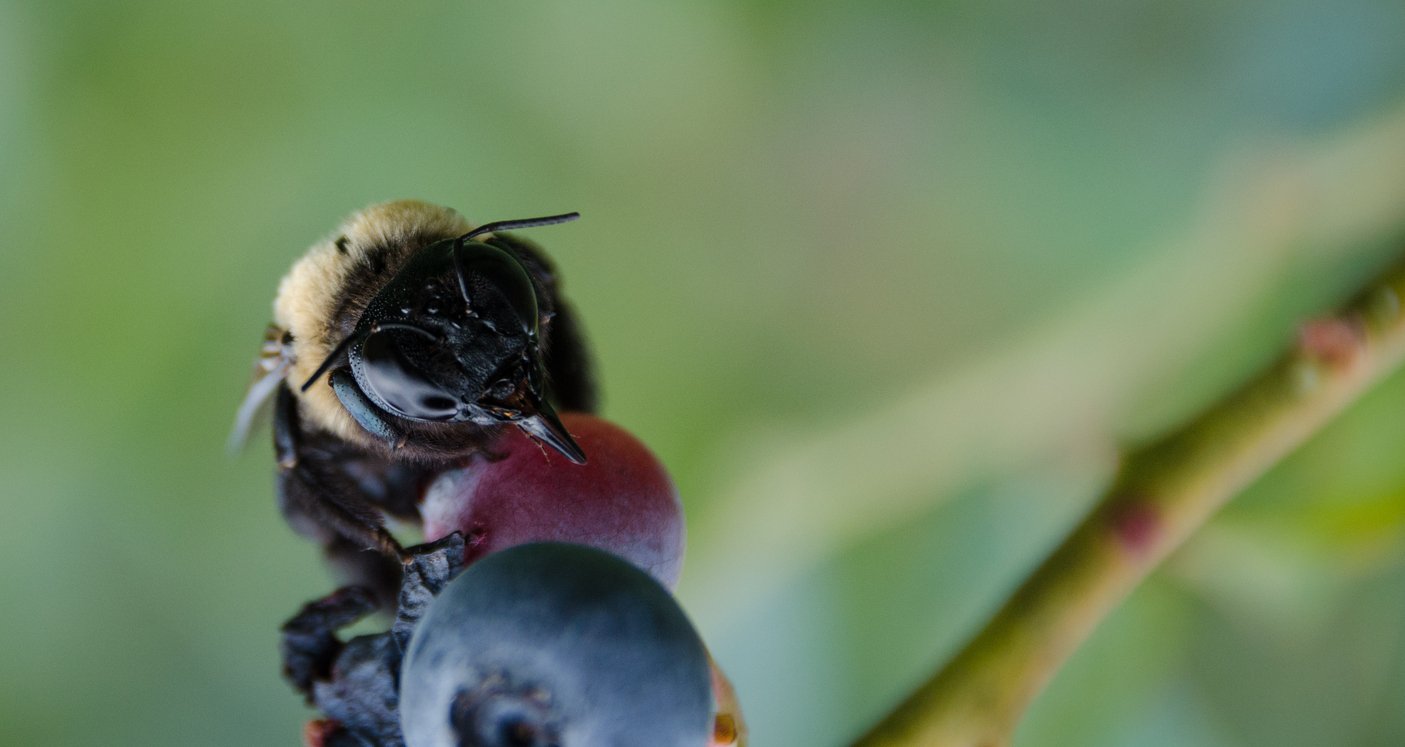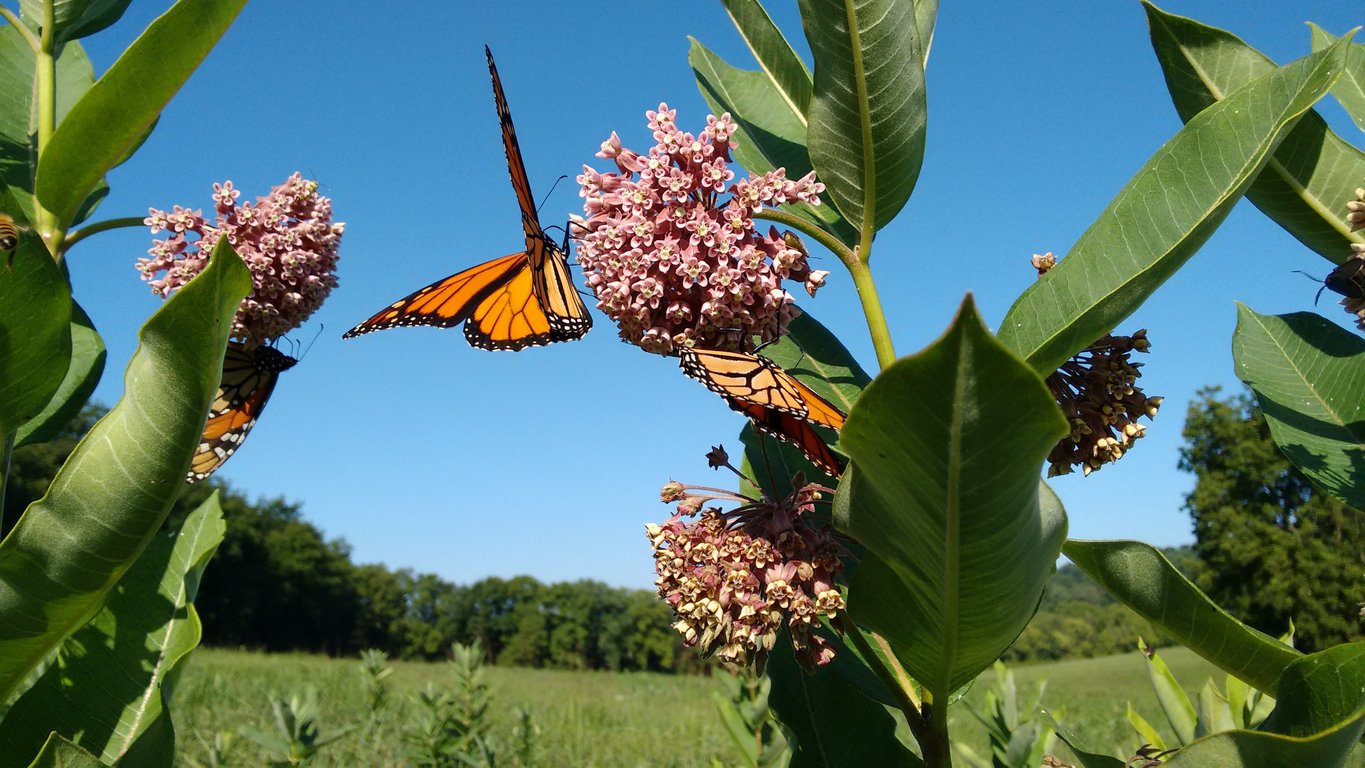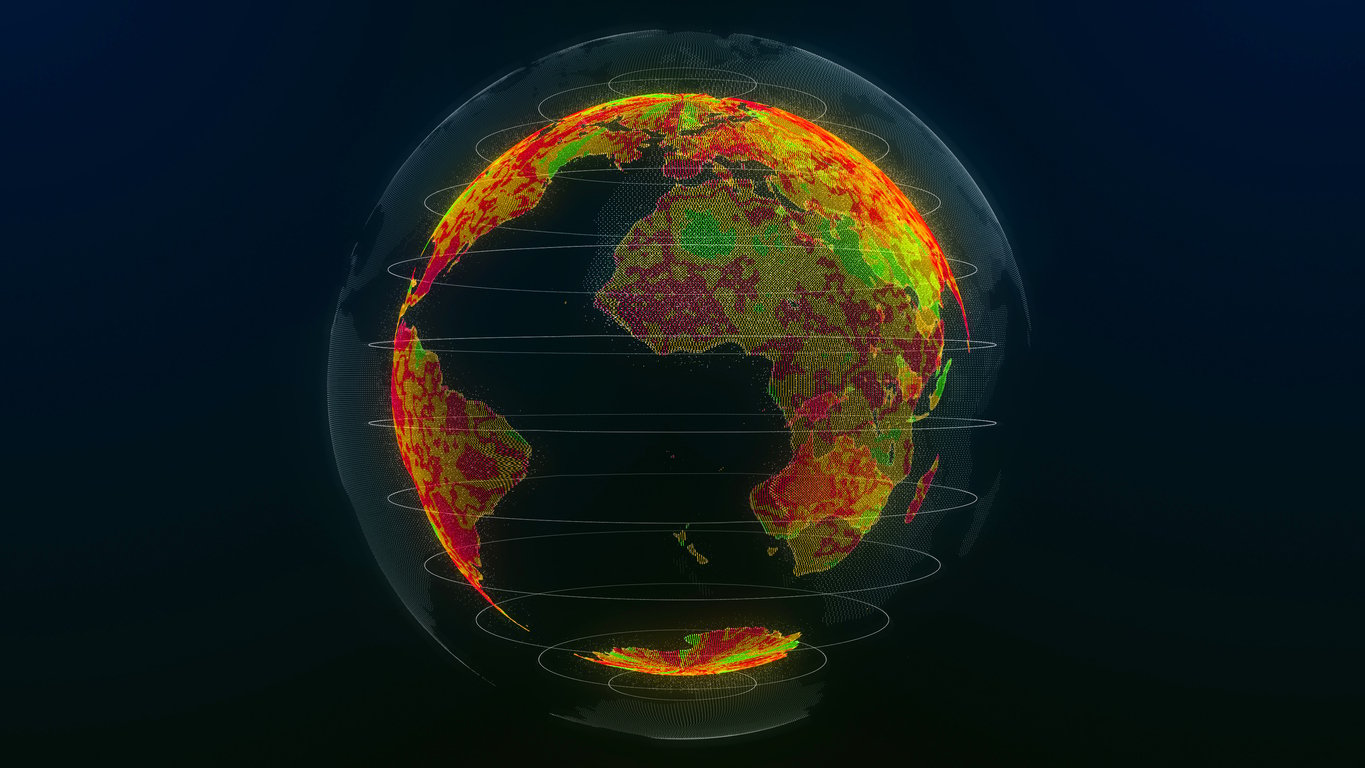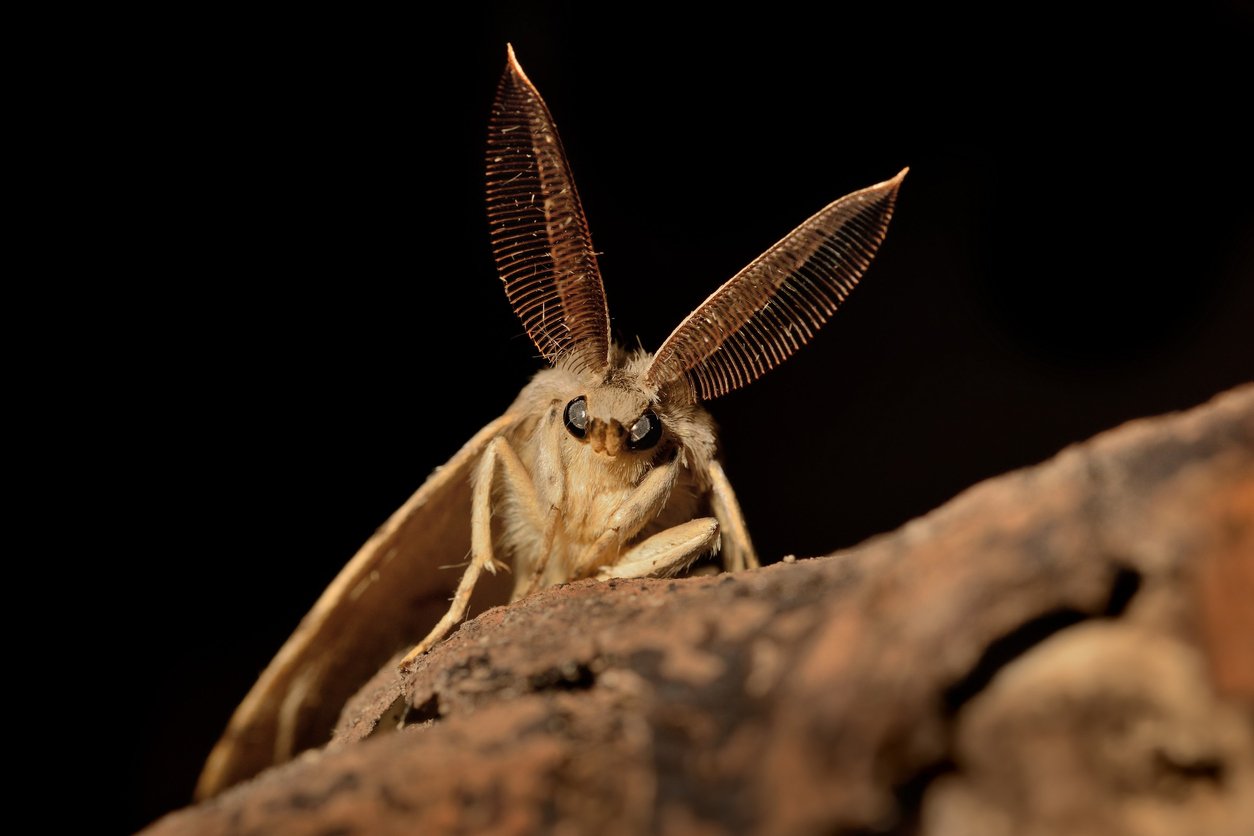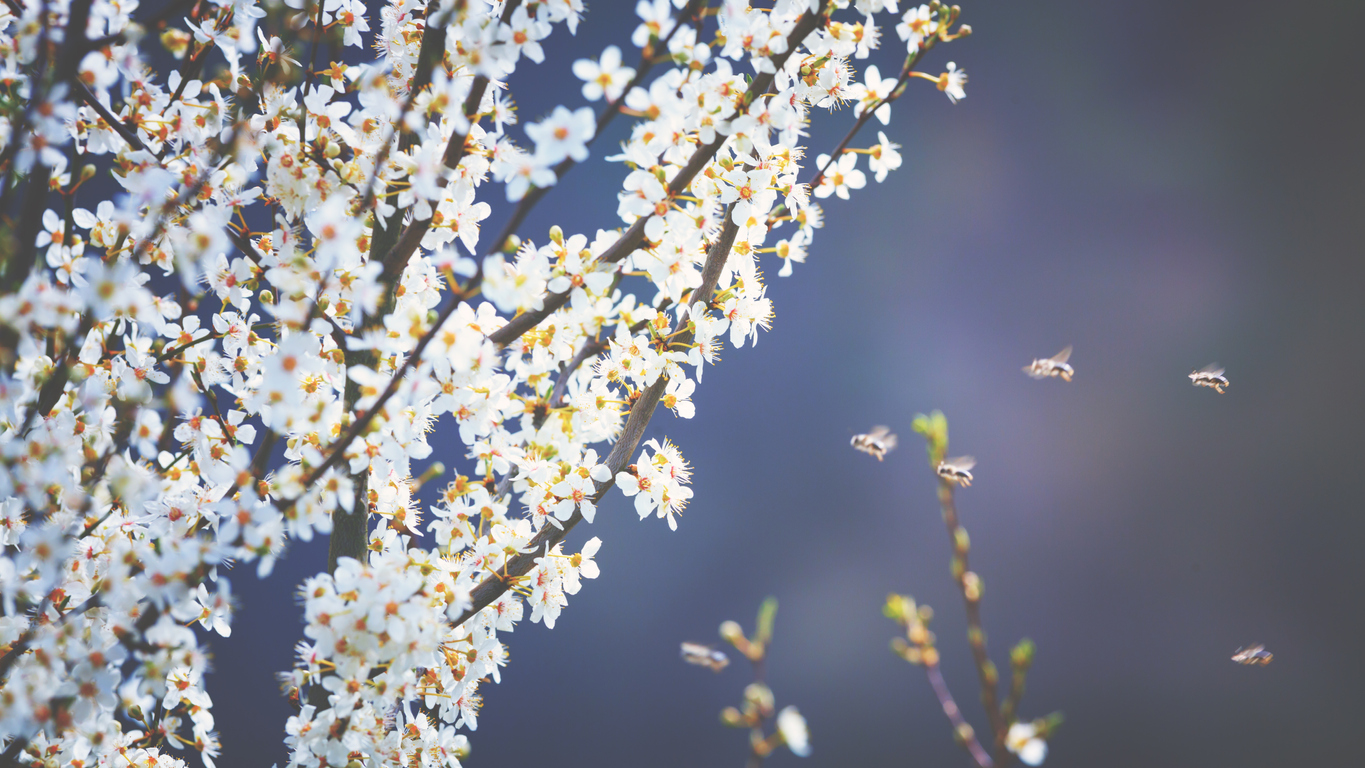In 1961, mathematician and meteorologist Edward Lorenz was simulating weather patterns in his lab at MIT when he discovered something strange. To save the time and trouble of rebooting his clunky LGP-30 computer, he had just rerun a portion of the model, using the exact same data as the original run. But this time the computer spit out a completely different set of results.
Lorenz was dumbfounded. Mathematics was an exact discipline; how could this happen? Upon close examination, he found one difference between the original inputs and the new ones — he had rounded some numbers from 6 decimal places down to 3. That is, if the input originally was 56.948321, he rounded it to 56.948.
It turned out that a tiny difference at the start of a process could have gigantic and completely unpredictable consequences down the road. Lorenz expressed this insight as a question at a meeting of the American Association for the Advancement of Science: “Does the flap of a butterfly’s wings in Brazil set off a tornado in Texas?” And that’s how the idea of the “butterfly effect” came to be: that tiny initial changes can have huge and unknown consequences. But that’s not where the astounding impact of bugs ends…
Who Cares About Insects?
When we think of the vast array of life on Earth, we generally picture majestic and/or adorable creatures — elephants, blue whales, redwoods, and cute puppies. Most of us don’t give insects a second thought unless they’re biting, stinging, or otherwise annoying us. Or, in the case of butterflies and fireflies, dazzling us with their beauty.
We, humans, favor other mammals in our ecology and conservation efforts, and largely overlook the invertebrates. While “Save the Whales” campaigns have garnered publicity and funding, there’s not a lot of excitement to “Save the Gerlach’s cockroach,” despite the fact that insects comprise over 94% of all known animal species.
It’s not just activist campaigns and nature documentaries that tend to ignore insects. That bias is part of public policy. The US Endangered Species Act, for example, treats vertebrates more generously than invertebrates.
But insects have a major impact on the world (and not just because they’re the most varied animal group on Earth). What’s crucial to understand is that they create the biological foundation for a vast array of terrestrial ecosystems. It’s not an exaggeration to say that without insects, the entire web of life would become so frayed that all life on Earth could be placed in jeopardy.
The sadness is that “without them” is where we’re heading — unless we take urgent and serious action to protect insects. Many entomologists (scientists who study insects) warn that we may be facing an “insect apocalypse”: a major decline in insect populations.
So what’s happening to the insects? Why are they so important? And is there anything we can do to prevent their — and our — demise?
In this article, we’ll look at the precipitous decline in insect populations worldwide, examine its causes, why it’s so concerning, and end with some things each of us can do to protect these creatures upon whom all life depends.
The Insect Apocalypse
When I was a kid, a two-hour drive in the country would produce so much insect carnage that sometimes you needed to keep the wipers going just to see oncoming traffic. But in the early 2000s, folks started noticing that their car’s windshields (or windscreens, if you grew up in Canada or the UK) were strangely devoid of insect splatter after long road trips.
And it wasn’t just their nostalgic imaginations playing tricks on them. A research study conducted by amateur German entomologists found that insect populations had declined by 75% between 1989 and 2017. The researchers set up insect traps and measured the weight of the flying bugs they collected. Over the years, the numbers plummeted to the point where by 2017, the traps were collecting just one-quarter of the insects that they had in 1989.
The “windshield effect” has also been subjected to scientific scrutiny. In 2003, researchers in England began equipping the front of participating cars with “splatometers,” a type of PVC film marked with a grid to measure insect splatting. Over the next 15 years, the number of insects decreased by 50%. Researchers in Denmark ran similar tests from 1997 to 2017 and documented an 80% reduction in one survey and a staggering 97% decrease in a second one.
These findings are frightening, and they may be just the tip of the iceberg. While fewer than 1% of described invertebrate species have been assessed for threats by the International Union for Conservation of Nature (IUCN), approximately 40% of all those that have been assessed are considered threatened species.
Why Are Insects Important?
At this point, you might be thinking, “Why is this a problem? Insects are annoying!” It’s not like windshield splatter is the highlight of anyone’s summer vacation. Will anyone miss mosquitoes? What’s the big deal?
It turns out that the demise of insects is a very big deal indeed. First, without insects, entire ecosystems would literally collapse. Many insects consume other insects (including those that eat the plants we like to cultivate, and those that spread disease to mammals). Also, many insects are food for larger animals, including most birds, freshwater fish, frogs, and lizards. Without these insects to eat, entire vertebrate species would starve and die off. And humans would discover that we can’t go it alone.
There’s another reason why insects are so important: they pollinate roughly three-quarters of the crops we grow, including most of our fruits and vegetables. Millions, and perhaps even billions more people worldwide would starve without insects’ contribution to our food production.
And that’s not just a future scenario. We’re already seeing the impact of reduced pollinator populations on crop yields. A 2020 Royal Society study examined seven crops grown in 13 states across America. Five of them, including apples, blueberries, and cherries, produced reduced yields due to a lack of native bees.
Like Joni Mitchell sang in her 1970 hit, “Big Yellow Taxi,” “You don’t know what you’ve got ‘til it’s gone.” Now that pollinators are disappearing, the agricultural industry is beginning to quantify the loss in financial terms. It turns out that bees, wasps, butterflies, and other pollinators are performing free labor that’s worth up to half a trillion dollars to crop producers and consumers around the world. Honey bees alone contribute around $217 billion to the global economy. When they can’t show up for work because they’re, well, dead, entire agricultural economies are at risk of collapse.
Insects also pollinate the large majority of wildflowers. In fact, roughly 87% of all plant species require pollination, most of it delivered by insects.
And let’s not forget aquatic insects, which play critical roles in both saltwater and freshwater ecosystems. In addition to their role as food for the next rung on the food ladder, many of them purify water, so much so that the presence of certain insects serves as an indicator of water quality.
Are All Insect Populations Declining?
On average, insect populations are dropping at a rate of about 1% per year. Some insect species, however, are actually benefiting from a changing world and growing their numbers. In Great Britain, for example, many species of moths are becoming more populous. And numerous temperate insects have increased in abundance and extended their range in response to warmer global temperatures.
But the overall downward trend is unmistakable and extremely worrying. Might there be an insect population threshold below which entire ecosystems collapse? A straw that breaks the camel fly’s back, as it were? We have no idea how close we might be to such a tipping point.
Causes of Insect Decline
Multiple factors, all ultimately byproducts of human activity, are contributing to this environmental catastrophe in progress. One of the most prominent researchers into insect decline, Stanford University’s Rodolfo Dirzo, thinks of it as “death by a thousand cuts.” But we absolutely know what are some of the key contributing factors.
Agricultural Intensification’s Impact on Insects
Growing plants for food isn’t inherently an environmental problem. But the way humans are doing it — on an industrialized scale, and often completely ignoring and overriding biological principles — is taking a serious toll on insect populations.
For one thing, industrial agriculture depends on monocultures, which are basically giant fields growing the same single crop year after year. While this arrangement can provide short-term economies of scale (farmers can use the same specialized equipment and buy one type of seed, fertilizer, and mixture of pesticides), it compromises biodiversity, which means fewer insects.
And monocultured fields still need to be pollinated. But when pollinators have nothing to eat, they don’t stick around to provide their services for free.
Pesticides’ Impact on Insects
In its quest for perfect efficiency, industrial agriculture has embraced genetic bioengineering, producing what are commonly known as GMO or BE crops. Many of these crops are bioengineered to withstand the effects of specific pesticides, which are then sprayed liberally on the fields to kill insects, weeds, and anything else that isn’t the cash crop.
The problem is that broad-spectrum pesticides harm many insects by design, not just the specific “pests” they’re meant to kill. Unintended casualties of these chemicals include important pollinators like monarch butterflies whose numbers declined by 80% in just the last two decades.
The main killer of monarchs appears to be the weed killer dicamba, which is used on BE cotton and soybean fields but can drift and cover much larger areas. Dicamba kills milkweed, which is the main food source for monarch caterpillars and the place they lay their eggs. Even if a milkweed plant survives, the dicamba contamination is still harmful to the monarchs.
One of the classes of pesticides most dangerous to insects is neonicotinoids, which were developed by the Shell and Bayer corporations in the last two decades of the 20th century. They are toxic to insect brains. And bees and other pollinators are especially sensitive to the effects of these chemicals.
Fertilizers and Insects
It’s not only agricultural pesticides that threaten insect populations, however. The overreliance on synthetic fertilizers (and the burning of fossil fuels for agricultural transportation) creates runoff that pumps untenable quantities of nitrates, nitrites, and ammonia into the water supply. And these excess nutrients contribute to pollution, harmful algal blooms, and oxygen-deprived aquatic zones. This can kill off beneficial insects in areas downstream from industrialized agricultural activity.
Deforestation Is Killing Insects
Agriculture also kills insects by gobbling up their natural habitat and transforming it into inhospitable landscapes. Most of the world’s deforestation is directly linked to agriculture — particularly the destruction of tropical rainforests. And as the most biodiverse regions on the planet, these rainforests are also the home of the largest number of insect species.
As I write these words, roughly one-quarter of the Amazon rainforest, the world’s largest and most diverse rainforest, is gone — with much of it becoming grazing land for cattle. In southeast Asia, rainforests are being replaced by monocropped oil palm plantations.
Deforestation directly causes a decline in insect populations because when trees are cut, the insects dwelling on those trees lose their habitats. Indirectly, felling trees on such a large scale alters rainfall patterns, which further decimates insect populations.
Global Warming and Insects
And then, of course, there’s climate change. Researchers are discovering alarming links between insect population decline and higher temperatures. The more the average temperature in a region has increased, a 2021 study found, the greater the ecological damage, and the more evidence of insect population collapse.
One mechanism by which hotter temperatures can harm insect populations is by knocking insects and plants out of sync. When flowers bloom earlier or later than usual, there may not be any insects around to pollinate them. And when insects emerge looking for their food sources, the flowers their species has relied upon for eons may have bloomed already — or may have yet to bloom.
There’s also evidence that repeated heat waves can “almost sterilize” male bugs, and may “turn whole populations of male insects into eunuchs.” Perhaps it isn’t only humans and plants that tend to “wilt” on a hot day.
Climate change also harms insects in more spectacular ways with a greater incidence of fires, stronger storms, and prolonged droughts all contributing to habitat loss and decreased insect resilience.
Invasive Insect and Plant Species
Yet another way humans have harmed insect populations is by introducing, often accidentally, non-native invasive species into novel ecosystems. These invasives can overrun ecosystems at the expense of native organisms. It’s estimated that the introduction of non-native plants may reduce the number of insect herbivores by more than 90% by out-competing the plants that the insects eat.
Colony collapse disorder, which refers to the death of many honeybee populations, is partly due to the introduction of new pathogens, including varroa mites, fungi, and viruses, into beehives.
Sometimes it’s insect species themselves that are invasive and damage forests and trees so that native insects can no longer thrive. This can happen in places where the invading insect or disease species has no natural enemies to keep it in check, and when trees and other organisms lack natural resistance against the invader. Examples include the emerald ash borer, which traveled to North America from Asia in the 1990s, probably via packing materials, and now attacks ash trees; and the gypsy moth, which was imported from Europe to Massachusetts in 1869 (in an ill-advised attempt to set up a local silk industry) and now defoliates hardwood trees.
On the slightly brighter side, the removal of invasive plants from streams and wetlands can improve the habitat for dragonflies and damselflies.
Urbanization, Light Pollution, and Insects
Insect declines are most conspicuous in areas of intensive human activity — that is, cities.
Why does city life have such a profound effect on insects? For one thing, urban sprawl equates to less habitat for insects. More houses and concrete equal less food, fewer places to lay eggs, and fewer places to hide from predators. For example, in tropical west Africa, researchers have observed huge declines in beetle and wasp populations brought about by urbanization.
For many perfectly good reasons, people tend to dislike mosquitos and other biting insects. As a result, many residential areas deploy quite a bit of airborne mosquito repellent. The problem is, many of these repellents contain pyrethrins and pyrethroids — both broad-spectrum insecticides that are highly toxic to a wide variety of insects, including pollinators like bees.
Another form of pollution that we tend not to think about because it’s so pervasive is light pollution. In addition to the harms that 24/7 light can do to our own circadian biology, there’s mounting evidence that light pollution is driving local declines in insects in suburban and urban locations. Insects like moths are attracted to light and thus fall prey to artificial lights either by exhaustion or predation. And fireflies often fail to reproduce when overexposed to artificial lights.
What Can Be Done to Prevent an Insect Apocalypse?
Even with all that bad news, there’s actually some hope to be had here. Some large-scale strategies can exert an almost-immediate positive impact on insect populations. And one of the most powerful levers of change is our food system.
1. Move Away from Monocultures
We must move production away from monocultures, bioengineering, and factory farming to more sustainable agricultural practices, such as alley cropping, integrated pest management, and polycultures.
To eliminate monocropping without harming our ability to produce enough food for a growing human population, we must also move away from beef and dairy, in particular, and animal agriculture, in general. Turning forests into grazing land for cattle, and growing monocultures of corn and soy for livestock, are both inefficient means of food production and are destructive to insect habitats. It takes about 12 pounds of grain to produce a single pound of feedlot beef — and animal agriculture functions like a protein factory in reverse. Considering that about 80% of the world’s agricultural land serves livestock production, a move towards more plant-based foods can free up vast areas that can return to native habits, sequester carbon, and contribute to healthy insects and ecosystems for generations to come.
2. Allow for More Green Space
We can also reimagine urban areas to include much more greenery. Not only does access to nature support human health and happiness, but greening our cities can also make them friendlier to insects. We need to empower designers and landscapers of parks, gardens, and even golf courses with the knowledge and skills to create suitable habitats for both herbivorous and predatory insects. This means prioritizing indigenous plants that are adapted both to the local climate and the predatory pressures of local insect populations. We could adopt a public policy of replacing manicured lawns with native wildflowers, grasses, and, my favorite of all, food gardens.
3. Enact Public Policies
There’s a lot that can be done politically. We could advocate to prioritize insects’ place on the Endangered Species lists, work to ban harmful pesticides, and educate lawmakers and each other on the importance of saving insects from decimation and extinction. For this and a million other reasons, it’s past time to get serious about reversing climate change by cutting greenhouse gas emissions and shifting to a carbon-neutral economy.
4. Plant Pollinator-Friendly Plants and Trees
We can also act on a smaller scale, as individuals, families, and communities. If you can, plant native species, especially wildflowers, in your garden. The Xerces Society for Invertebrate Preservation shares lists of pollinator-friendly native plants by region. And here’s a list of wildflowers that can support bees and butterflies.
If you have a lawn, consider converting some of it to a garden or “micro-meadow” — or at the very least, mow less often. Mowing can kill insects living in the grass or soil. And letting your grass grow a couple of inches between mowing can save on your water bill and can also give “weed flowers” like clover and dandelions a chance to feed beneficial insects.
If you have some garden space that gets sufficient sun, plant trees with blossoms that attract pollinators. Fruit trees such as apple, cherry, and plum will attract bees.
If your community currently has zoning regulations forbidding any of these changes, you might have to become a bit of an educator and activist to help your neighbors understand what’s at stake, and why changing their aesthetics is so important. For inspiration, check out this 2016 TED Talk by “Gangsta Gardener” Ron Finley, who took on the Los Angeles zoning board to fight for his right to grow food in his backyard and on sidewalk medians in his South Central LA neighborhood.
5. Vote with Your Dollars
You can also support healthy insect populations with your wallet. When you buy locally grown food, you avoid purchasing food imported from tropical countries — crops that are sometimes responsible for large-scale deforestation. It’s especially helpful to avoid foods with palm oil. The palm oil industry is destroying both forests and carbon-rich peat bogs in favor of monocropped plantations of oil palms.
Bugs Need Love Too
Insects are a vital part of the web of life. They help cycle nutrients back into their ecosystems. They pollinate food crops and other plants. They maintain and improve soil structure and fertility. They keep populations of other organisms in check. And they provide a major food source for animals.
But insect populations around the world are plummeting, many at an alarming and frankly apocalyptic rate. This decline can be traced to the many varied impacts of human activities including, industrialized agriculture, animal agriculture, climate change, and urbanization.
Although researchers aren’t sure exactly what will happen if insect populations continue to decline, it seems pretty clear that without insects, ecosystems may collapse and threaten life on Earth as we know it. There’s no time to waste — we must take massive and comprehensive, large- and small-scale action to help insect populations recover and not continue to be decimated by human impact.
If things seem hopeless to you right now, take heart by recalling Lorenz’s “butterfly effect.” If a butterfly flapping its wings in Brazil can cause a tornado in Texas, then surely millions of people taking individual and collective action can change our planet for the better.
And the heartening news is that the same choices that can help to preserve future generations of insects can also help to fight climate change, beautify our cities, and contribute to healthier and more sustainable food systems.
Tell us in the comments:
- Have you noticed fewer insects these days compared to your childhood?
- What can you do in your own life to create habitat for beneficial insects?
- What cause might you get involved with that can help reverse the “insect apocalypse”?
Feature Image: iStock.com/Supersmario


